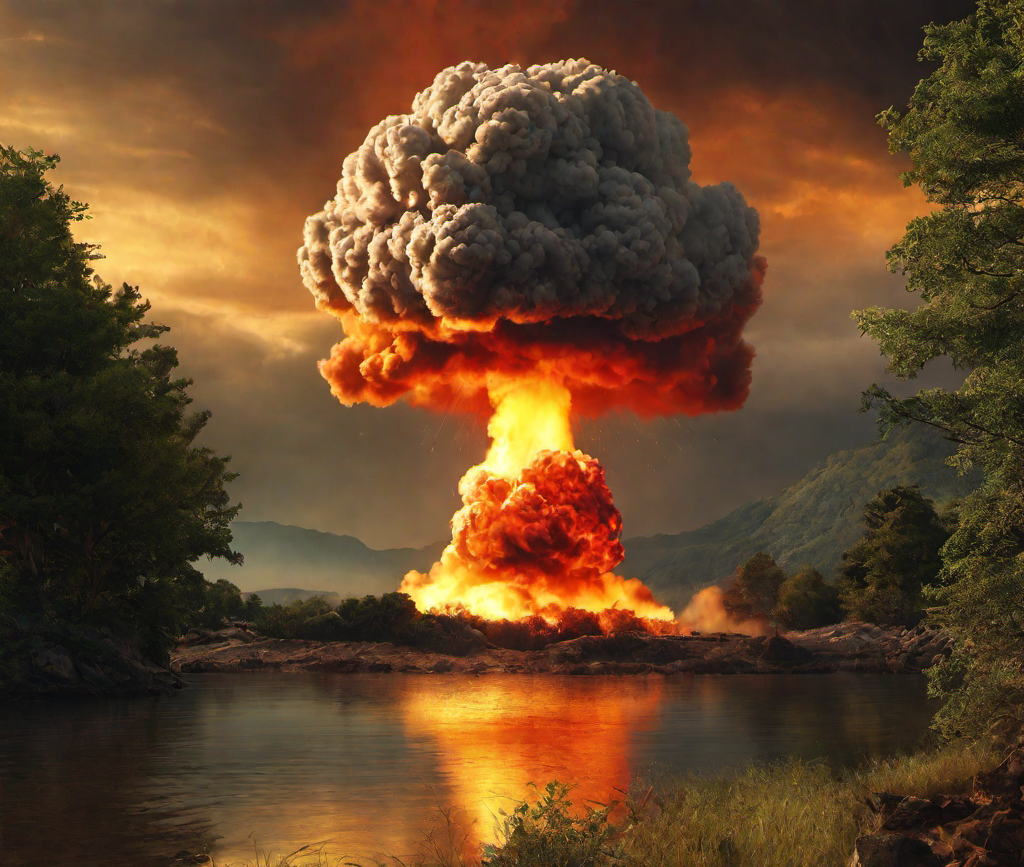Current US Nuclear Doctrine
US Nuclear Doctrine
US nuclear doctrine is a national security policy that focuses on the development, use, and control of nuclear weapons. This doctrine prepares the nation with the appropriate use of security and intimidation, with the aim of stopping maneuvers and flagging conflicts against enemies. From 1945 to current US nuclear doctrine, the country is always focusing on maintaining its nuclear doctrine so clear and make required changes with the changing scenario of geopolitics.
History of US Nuclear Doctrine
The history of US nuclear doctrine begins with the development of nuclear weapons during World War II. After successfully testing the first atomic bomb in 1945, the US used nuclear weapons against the Japanese cities of Hiroshima and Nagasaki, ending the war. This ushered in the era of nuclear weapons and required a coherent nuclear doctrine to guide their use.
- Post-World War I Period: In the period immediately following World War II, the primary focus of US nuclear doctrine was placed on nuclear weapons. It was the US that possessed functional nuclear weapons, and aimed to use this advantage as a form of intimidation and unpredictability against enemies.
- Containment Strategy: When the Cold War started with the Soviet Union, the US adopted a containment strategy. The Truman Doctrine (1947) and the Policy of Deterrence played an important role in shaping this doctrine. The concept of “mutually assured destruction” (MAD) appeared, according to which the use of nuclear weapons by one superpower would ensure the other’s complete destruction, thereby preventing direct conflict.
- Flexible Response: In the 1960s, the US moved towards a “flexible response” strategy. The doctrine aimed to provide a diverse warfare option to support various levels of attack. This was intended to prevent nuclear incidents, which would help avoid an all-out nuclear war by providing alternatives to a most possessive nuclear war.
- Multiple Nuclear Roles: Late 1960s and In the early 1970s, US nuclear doctrine was instructed with different roles. Nuclear weapons were employed in a number of roles to provide intimidation, warfare, and security to officers. The US maintained a policy of “first use” in response to significant threats.
- Reagan Era: In the 1980s, the US took a more assertive nuclear stand under Ronald Reagan’s national security policy. With the Strategic Defense Initiative (SDI) or “Star Wars”, the US sought the development of missile defense systems to protect against multiple nuclear attacks. However, the implementation of this initiative’s decision remained questionable.
- Post-Cold War Era: With the end of the Cold War in the 1990s, the US began to drastically reduce its nuclear arsenal. The focus shifted toward control and nuclear treaty efforts with deterrence planning, such as the Non- Proliferation Treaty (NPT). The goal was to maintain a credible mask with a small nuclear force.

Current US Nuclear Doctrine
Current US nuclear doctrine sets national security policy to the present day and focuses on the country’s use, development, and control of nuclear weapons. The purpose of this doctrine is to ensure a strong and reliable defense system against terrorism that can protect American citizens and deter enemies.
Features of Current US Nuclear Doctrine:
- Safeguards for Security: The US nuclear doctrine prepares its security under safeguards keeping in view the geopolitical environment. It prevents other nations from feeling hostile and attempting to maneuver with an empowered citizenry in a balanced and fearful world.
- Safety of Civilians: The US nuclear doctrine maintains the safety of its citizens as its priority. The main goal of this doctrine is to protect the American public from any form of attack and to protect itself with the efficiency of securities.
- Credibility: The US nuclear doctrine adheres to credibility in the use of its nuclear weapons. It cooperates for world peace and agreements between nations and follows international rules in the development of nuclear war.
- Deterrence of maneuvers: One of the main objectives of the US nuclear doctrine is to prevent its maneuvers. It keeps other nations away from the spirit of intimidation and competition and tries to develop a positive defense system to protect the citizens.
Thus, the current US nuclear doctrine seeks to protect the nation, fortify against conflicts with intimidation. This policy encourages maintaining relations with nations around the world and establishing world peace.
Show your Love:https://daytodayfacts.com

